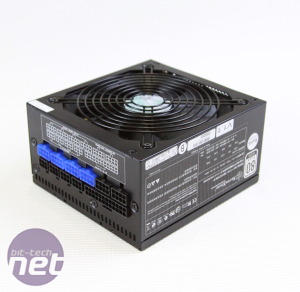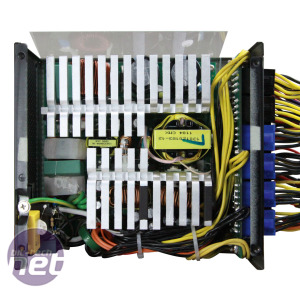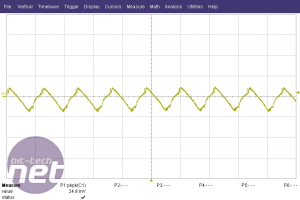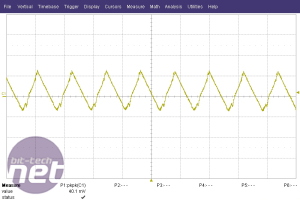What is the Best 600W+ PSU?
September 21, 2011 | 14:19
Companies: #antec #be-quiet #bit-tech #corsair #cougar #enermax #fsp #seasonic #silverstone #thermaltake

SilverStone Strider Plus ST75F-P Review
Manufacturer: SilverStoneUK price (as reviewed): £95.98 (inc VAT)
US price (as reviewed): $129.99 (ex tax)
The SilverStone Strider Plus ST75F-P – which is assembled for SilverStone by Enhance Electronics – occupies the middle of this group test in terms of price. However, it has a couple of premium features that make it stand out, even among some of the more expensive PSUs on test, such as the Enermax EMG600AWT and the Be Quiet! Dark Power Pro P9 650W.
Click to enlarge
The first of these features is that the PSU is entirely modular, which is a great touch that makes assembling a PC easier. It also means that the PSU is compatible with the SilverStone PP05 cable kit, which is a set of shortened replacement modular cables that can be used with Strider Series PSUs. This set retails for around £13 and could be invaluable for a micro-ATX build, especially in a cramped case such as the SilverStone FT03.
The Strider Plus is also fitted with 2200uF capacitors on each of its PCI-E connectors, which it claims reduces the electrical whine that can sometimes result from the dynamic load changes that graphics cards undergo. It also claims that this design helps to enhance voltage stability and reduce the amount of ripple and noise; oddly though, it doesn’t have a power switch, which could make filling water-cooling loops quite difficult.
Like the Corsair Professional Series HX650, the Strider Plus uses one large 60A 12V rail as opposed to a bunch of smaller 12V rails. It’s debatable which approach is the best method, as both have their advantages and disadvantages. At least with a single 12V rail, you don’t have to think about balancing your components over a number of different rails.
The Strider Plus has six Molex and SATA connectors, which isn’t as many as most of the PSUs in this group test but should still be enough to service a powerful PC. The PSU also boasts four PCI-E connectors, although two of these are the 6-pin variant, which is a little disappointing.
We saw no stability issues from the Strider Plus at 50 per cent load, with all the supplied voltages well within tolerances. Increasing the draw to 100 per cent load saw some dips to the voltage on the 5V rail drop though; although it stayed within the ATX specification, it was only by the narrowest of margins. The PSU’s efficiency across our tests was generally solid too, with 88 per cent efficiency at half load and 87 per cent at full load.
Meanwhile, our ripple test showed that the output on the 12V rail had 40.1mV of ripple, which is one of the poorer results we’ve seen from the 600W+ PSUs on test. Holdup times were also variable, with the 5V rail achieving a commendable 25.5ms while the 12V rail fell nearly 3ms below the 17ms recommendation.
The SilverStone Strider Plus ticks most of the boxes, but it fails to stand out from the crowd. We also have concerns over its 5V rail being weak. The Corsair Professional Series HX650 is cheaper and equally stable, while the Antec High Current Pro HCP-750 is more efficient and better connected.


MSI MPG Velox 100R Chassis Review
October 14 2021 | 15:04












Want to comment? Please log in.